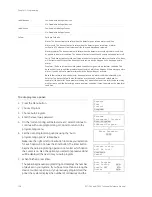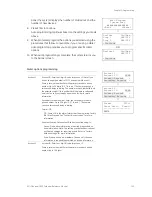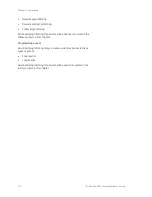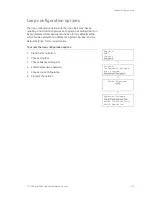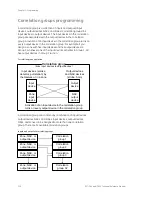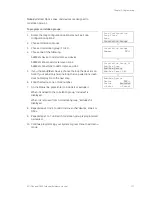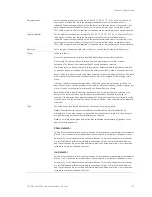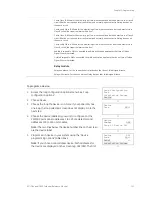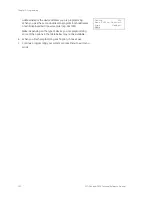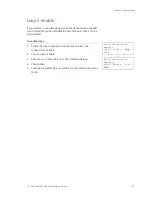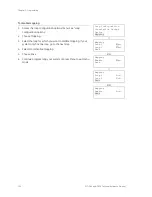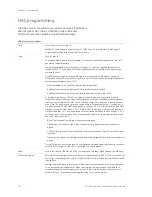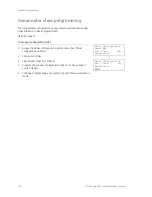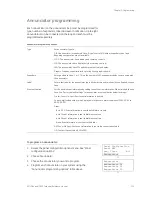
Chapter 3: Programming
120
EST iO64 and iO500 Technical Reference Manual
Duct detector
Duct alarm: For duct smoke detectors. All activations are immediately considered as alarms.
Circuit cannot be restored until devices are restored to normal and the panel is reset.
Duct supervisory (latching and nonlatching): For the connection of duct supervisory devices.
Momentary activation of normally open devices immediately places the panel in a supervisory
state and turns on supervisory LEDs and relays. Circuit cannot be restored until devices are
restored to normal and the panel is reset.
Heat detector
Heat alarm: For heat detectors and contact devices. All activations are immediately considered
as alarms. Circuit cannot be restored until devices are restored to normal and the panel is
reset.
Heat alarm RoR: For heat detectors and contact devices with rate-of-rise. All activations are
immediately considered as alarms. Circuit cannot be restored until devices are restored to
normal and the panel is reset.
Input module
Alarm: For smoke detectors and contact devices. All activations are immediately considered as
alarms. Circuit cannot be restored until devices are restored to normal and the panel is reset.
Heat: For heat detectors and contact devices. All activations are immediately considered as
alarms. Circuit cannot be restored until devices are restored to normal and the panel is reset.
Pull station: For pull station devices. All activations are immediately considered as alarms.
Waterflow: For connection of both vane type and pressure flow switches. Activations are
immediately considered as alarms. NACs activated by devices programmed as waterflow
cannot be silenced until the activated devices are restored to normal via a panel reset. Circuit
cannot be restored until devices are restored to normal and the panel is reset.
Duct alarm: For duct smoke detectors. All activations are immediately considered as alarms.
Circuit cannot be restored until devices are restored to normal and the panel is reset.
Duct supervisory (latching and nonlatching): For the connection of duct supervisory devices.
Momentary activation of normally open devices immediately places the panel in a supervisory
state and turns on supervisory LEDs and relays. Circuit cannot be restored until devices are
restored to normal and the panel is reset.
Supervisory latching: For the connection of supervisory devices. Momentary activation of
normally open devices immediately places the panel in a supervisory state and turns on
supervisory LEDs and relays. Circuit cannot be restored until devices are restored to normal
and the panel is reset.
Supervisory nonlatching: For the connection of supervisory devices. Momentary activation of
normally open devices immediately places the panel in a supervisory state and turns on the
supervisory LED and relay. Annunciation remains active until the input restores. The panel does
not have to be reset.
Monitor: Monitoring of normally open switches for other functions (fire door position, etc.). Not
approved for use under ULC 527 in Canada.
Remote reset: For connecting a remote switch that when activated, resets the panel.
Remote drill: For connecting a remote switch that when activated, starts the panels drill
operation.
Remote signal silence: For connecting a remote switch that when activated, silences the
signaling devices.
Remote AC fail: For use with auxiliary power supplies to provide AC Fail indication to the fire
panel. The fire panel treats this activation as if the panel itself detected an AC fail condition.
Delays off-premises signaling for the selected time duration.



